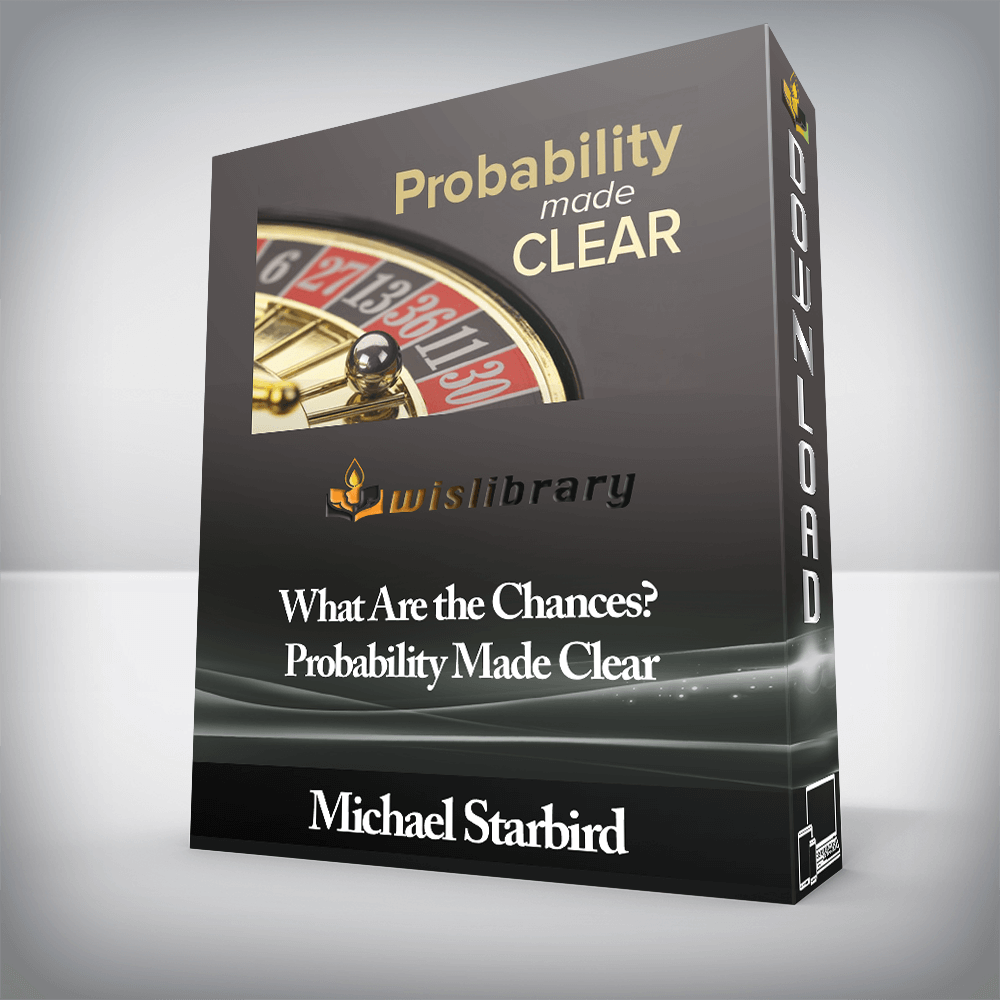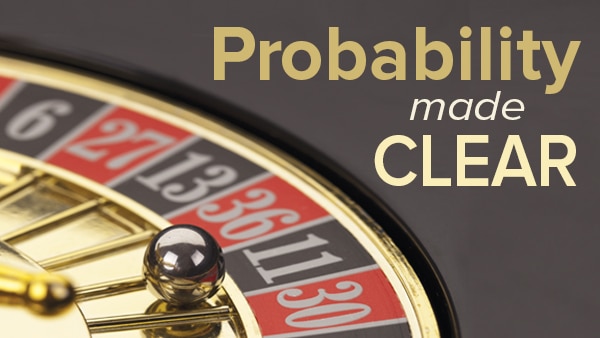

Life is full of probabilities. Every time you choose something to eat, you deal with probable effects on your health. Every time you drive your car, probability gives a small but measurable chance that you will have an accident. Every time you buy a stock, play poker, or make plans based on a weather forecast, you are consigning your fate to probability.
What Are the Chances? Probability Made Clear helps you understand the random factors that lurk behind almost everything—from the chance combinations of genes that produced you to the high odds that the waiting time at a bus stop will be longer than the average time between buses if they operate on a random schedule.
In 12 stimulating half-hour lectures, you will explore the fundamental concepts and fascinating applications of probability.
Professor Michael Starbird knows the secret of making numbers come alive to non-mathematicians: he picks intriguing, useful, and entertaining examples. Here are some that you will explore in your investigation of probability as a reasoning tool:
The course literally begins with a roll of the dice, as Professor Starbird demonstrates that games of chance perfectly illustrate the basic principles of probability, including the importance of counting all possible outcomes of any random event. In Lecture 2, you probe the nature of randomness, which is famously symbolized by monkeys randomly hitting typewriter keys and creating Hamlet. In Lecture 3, you explore the concept of expected value, which is the average net loss or gain from performing an experiment or playing a game many times. Then in Lecture 4, you investigate the simple but mathematically fertile idea of the random walk, which may seem like a mindless way of going nowhere but which has important applications in many fields.
After this introduction to the key concepts of probability, you delve into the wealth of applications. Lectures 5 and 6 show that randomness and probability are central components of modern scientific descriptions of the world in physics and biology. Lecture 7 looks into the world of finance, particularly probabilistic models of stock and option behavior. Lecture 8 examines unusual applications, including game theory, which is the study of strategic decision-making in games, wars, business, and other areas. Then in Lecture 9 you consider two famous probability puzzles guaranteed to cause a stir: the birthday problem and the Let’s Make a Deal® Monty Hall question.
Finally, Lectures 10–12 cover increasingly sophisticated and surprising results of probabilistic reasoning associated with Bayes theorem. The course concludes with probability paradoxes.
One of the most familiar experiences of probability that we have on a daily basis is the weather report, with predictions like, “There is a 30 percent chance of rain tomorrow.” But what does that mean? What do you think? Choose one:
In Lecture 5, Dr. Starbird puts this particular forecast under the microscope to demonstrate that probabilistic statements have very precise meanings that can easily be misinterpreted—or misstated. He explains why the answer is (e) and not one of the other choices. He also explains why the official definition from the National Weather Service is subtly but decidedly wrong.
He even wagers that within five years the phrasing of the official definition will change because somebody at the National Weather Service will hear this lecture!
Games People Play
The formal study of probability was born at the dice table. Gambling continues to provide instructive examples of the principles of chance and probability, including:
One approach to probability, developed by mathematician and Presbyterian minister Thomas Bayes in the 18th century, interprets probability in terms of degrees of belief. As new information becomes available, the calculation of probability changes to take account of the new data. The Bayesian view reflects the reality that we adjust our confidence in our knowledge as we gain evidence.
The world of fluctuating probabilities, under continual adjustment as new evidence comes to light, captures the way the world works in realms like medicine, where a physician makes a preliminary diagnosis based on symptoms and probabilities, then orders tests, and then refines the diagnosis based on the test results and a new set of probabilities.
If you think about it, it’s also the way you work when you’re on a jury. At the outset, you have a vague impression of the likelihood of guilt or innocence of the defendant. As evidence mounts, you adjust the relative probabilities you assign to each of these verdicts. You may not do a formal calculation, but your informal procedure is nonetheless Bayesian.
Randomness is all around us. “Many or most parts of our lives involve situations where we don’t know what’s going to happen,”; says Professor Starbird. Probability comes to the rescue to describe what we should expect from randomness. It is a powerful tool for dispelling illusions and uncertainty to help us understand the true odds when we roll the dice in the game of life.
There are no reviews yet.
You must be <a href="https://wislibrary.net/my-account/">logged in</a> to post a review.